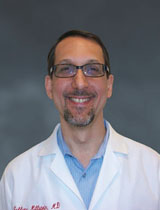Takeaway
Learning about the history of medicine can help put current health system challenges in perspective. I was especially struck by the enduring primacy of the patient-doctor relationship.

Lifelong Learning in Clinical Excellence | August 16, 2023 | 1 min read
By Jeffrey Millstein, MD, Penn Medicine
When we speak of medical history, most clinicians think of the medical interview—the thoughtful questions and interplay between clinician and patient in search of a diagnosis. The history is the cornerstone of medicine, the time when a relationship develops and most problem solving takes place.
There’s another medical history—the history of our profession—that can also be instructive in physicians’ work. History can bring contextual understanding as we navigate the countless challenges of caring for patients today. This became especially evident to me after I finally read a Pulitzer Prize winning book that’s been in my “I really should read this” pile for years: “The Social Transformation of American Medicine,” by Paul Starr (2017). A long and detailed volume, this book chronicles the development of doctoring in America from its very humble roots to a profession of tremendous power and influence, and the subsequent evolution of this dominion into a highly complex, multi-stakeholder medical marketplace. The author explains the many elements of economics, politics, world events, and social change that shaped this story over decades. Like in many other areas of life, critically examining the past can bring therapeutic insight to the present.
Here are some of the most helpful takeaways that I gleaned from this book:
1. Medicine in America wasn’t always a prestigious profession—far from it. It was common for doctors in the 19thand early 20th centuries to have a second career such as farming in order earn a stable living.
2. Physicians have been extraordinarily resilient through the years and have weathered many challenges to our credibility.
3. Throughout history, we’ve been very close to having a national healthcare system in the U.S., but the political milieu at various times has thwarted this effort.
4. The sites of clinical care delivery have expanded through the years—from home to hospital to office—accompanied by an ever changing and evolving system of compensation.
The one thing that has remained constant is the sanctity of the clinician-patient relationship, and that continues to keep all upheaval in perspective.
This piece expresses the views solely of the author. It does not necessarily represent the views of any organization, including Johns Hopkins Medicine.

